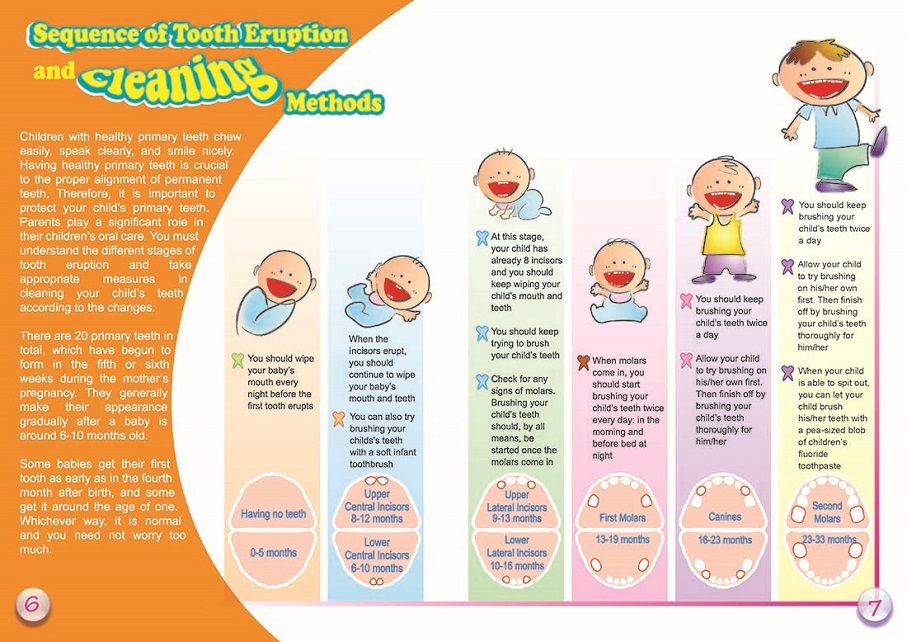Booklet - Oral Health Care for your Children

Sequence of Tooth Eruption and Cleaning Methods
Children with healthy primary teeth chew easily, speak clearly, and smile nicely. Having healthy primary teeth is crucial to the proper alignment of permanent teeth. Therefore, it is important to protect your child’s primary teeth. Parents play a significant role in their children’s oral care. You must understand the different stages of tooth eruption and take appropriate measures in cleaning your child’s teeth according to the changes.
There are 20 primary teeth in total, which have begun to form in the fifth or sixth weeks during the mother’s pregnancy. They generally make their appearance gradually after a baby is around 6-10 months old.
Some babies get their first tooth as early as in the fourth month after birth, and some get it around the age of one. Whichever way, it is normal and you need not worry too much.
0-5 months having no teeth
You should wipe your baby’s mouth every night before the first tooth erupts
8-12 months Upper Central incisors
6-10 months Lower Central incisors
When the incisors erupt, you should continue to wipe your baby’s mouth and teeth
You can also try brushing your child's teeth with a soft infant toothbrush
9-13 months Upper Lateral incisors
10-16 months Lower Lateral incisors
At this stage, your child has already 8 incisors and you should keep wiping your child’s mouth and teeth
You should keep trying to brush your child’s teeth
Check for any signs of molars. Brushing your child’s teeth should, by all means, be started once the molars come in
13-19 months First Molars
When molars come in, you should start brushing your child’s teeth twice every day: in the morning and before bed at night
16-23 months Canines
You should keep brushing your child’s teeth twice a day
Allow your child to try brushing on his/her own first. Then finish off by brushing your child’s teeth thoroughly for him/her
23-33 months Second Molars
You should keep brushing your child’s teeth twice a day
Allow your child to try brushing on his/her own first. Then finish off by brushing your child’s teeth thoroughly for him/her
When your child is able to spit out, you can let your child brush his/her teeth with a pea-sized blob of children’s fluoride toothpaste


